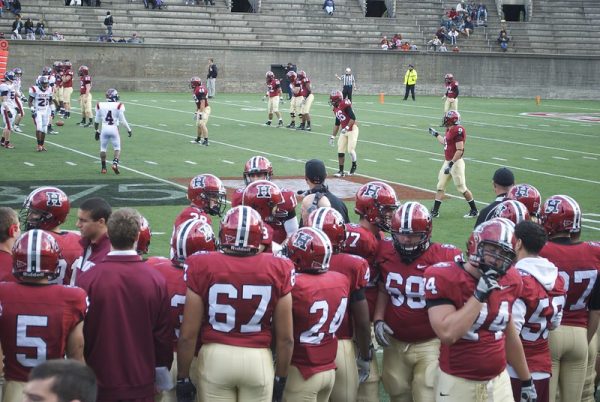
There is no shortage of writing on the history of college sports, especially its history of scandal. There is also plenty of writing on how big-time college sports harm both the colleges and their athletes. Books as varied as Pay for Play: A History of Big-Time College Athletic Reform, College Sports Inc.: The Athletic Department vs. The University and College Athletes for Hire: The Evolution and Legacy of the NCAA’s Amateur Myth highlight the rise of the NCAA through and because of scandal, the enormous amounts of money flowing through college athletic departments (but not to players), and the contortions of universities to fit big-time athletics.
But athletics matter even in schools defined by their academics rather than their sports. Documents from the recent Harvard affirmative action legal case confirm prior research: even at the Ivies and at coed liberal arts colleges, athletes receive a substantial admissions bump. Articles from The Atlantic and Slate detail this bump and how it especially benefits upper-class white students. At Ivies and elite liberal arts colleges, the potential financial gain from athletics (as suspect as that might be at other schools) doesn’t make sense as the primary reason to keep sports in these schools. So what are some other reasons that American higher education institutions prioritize athletics? Here are three that sociological thinking and research can help us understand.
1.Status Networks and Peer Institutions
First, athletics helps schools signal who their peers are, both academically and athletically. Higher education in the United States didn’t develop from a master plan. It is, instead, a network and market of schools that jockey for position, carving out niches and constantly battling for status. Athletic conferences are one way that institutions establish networks, and research has found that schools within conferences come to share similar status, both athletically and academically. The Ivy League is the prime example of this phenomenon. Although “the Ivies” have come to mean a set of elite schools, the league began as simply a commitment to compete against each other on the athletic playing field.
- Arik Lifschitz, Michael Sauder, and Mitchell L. Stevens. 2014. “Football as a Status System in U.S. Higher Education.” Sociology of Education 87(3): 204–19.
- David F. Labaree. 2017. A Perfect Mess: The Unlikely Ascendancy of American Higher Education. Chicago: The University of Chicago Press.
2. Competing for Students
Another way that colleges signal prestige is through established ranking systems, and a key part of those rankings come from measures of selectivity and the quality undergraduate students. So all colleges are competing for students — either to solidify rankings or to simply matriculate enough students for small, tuition-dependent institutions to be able to pay the bills. In Creating a Class, Mitchell Stevens points out how important athletics are to recruiting students within the competitive, small liberal arts space. He writes,
“Students choose schools for multiple reasons, and the ability to participate in a particular sport at a competitive level of play is often an important one. Because so many talented students also are serious athletes, colleges eager to admit students with top academic credentials are obliged to maintain at least passable teams and to support them with competitive facilities.”
- Mitchell L.Stevens. 2007. Creating a Class: College Admissions and the Education of Elites. Cambridge, MA: Harvard University Press.
3. Non-academic Signals in Admissions
Histories of Ivy League admissions have revealed how including athletic markers was part of establishing who belonged at the school. On the most obvious level, prominent alumni who were athletes or the parents of prospective students publicly pushed for admissions policies that would be beneficial to others like them. But more subtly, and more insidiously, having an affinity for athletics was viewed as a mark of the “Yale man,” the upper-class, Christian, future leader of the world who had the presence of mind and body to pick up new ideas and manage others.
- Jerome Karabel. 2006. The Chosen: The Hidden History of Admission and Exclusion at Harvard, Yale, and Princeton. Boston, MA: Mariner Books.
- Joseph A. Soares. 2007. The Power of Privilege: Yale and America’s Elite Colleges. Stanford, CA: Stanford University Press.
Athletics in colleges isn’t just a money-maker or something to keep students happy. It’s a way for colleges to recruit students, fight for status, and signal what types of students they value.
